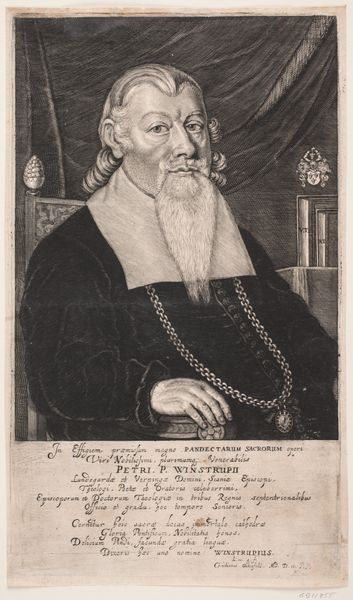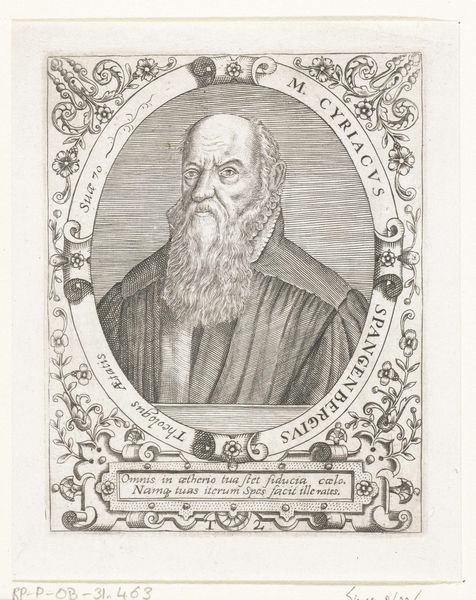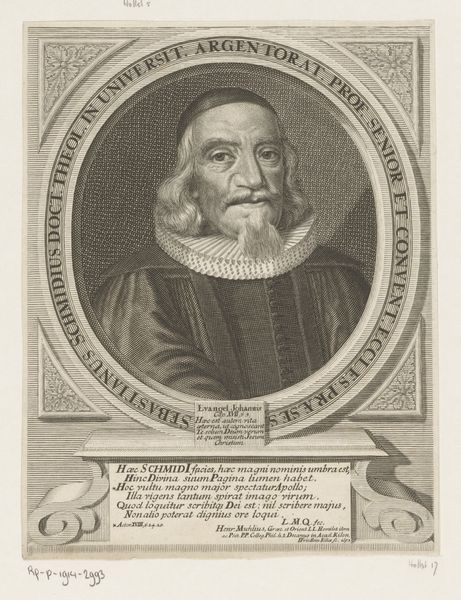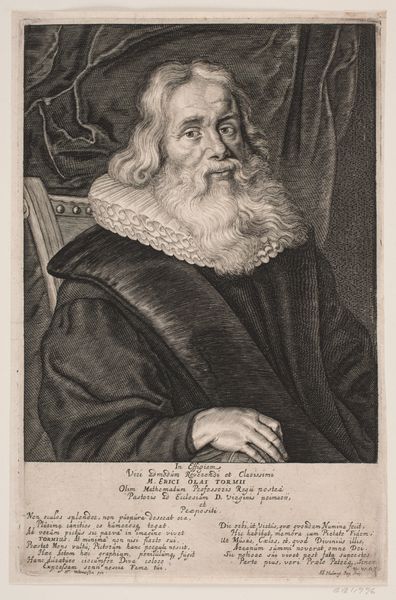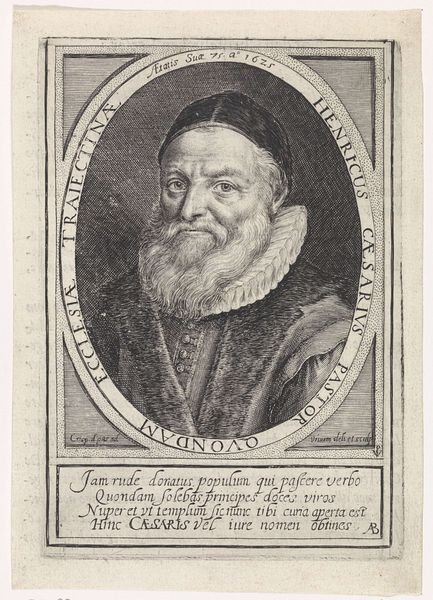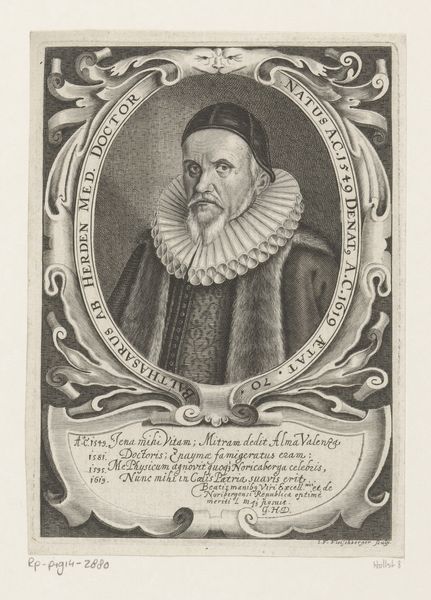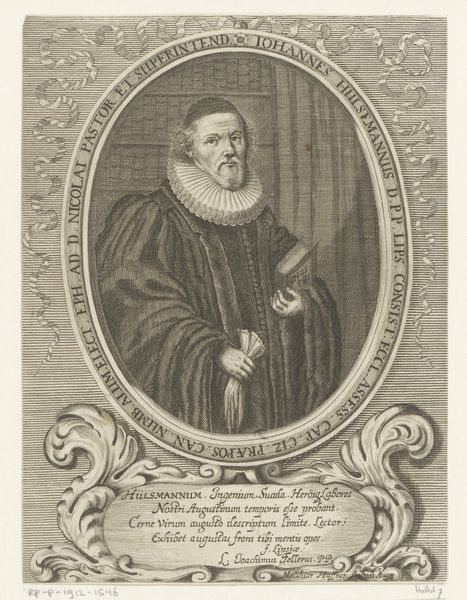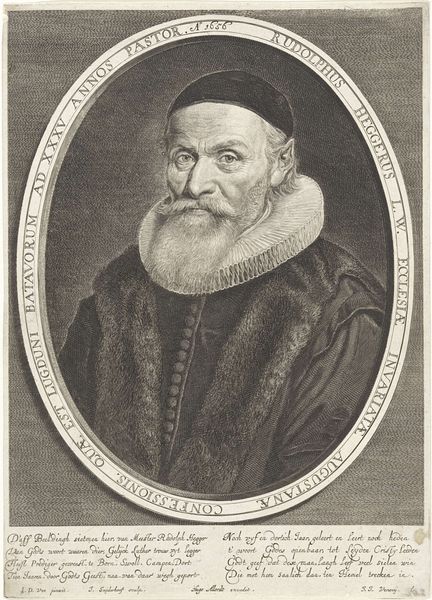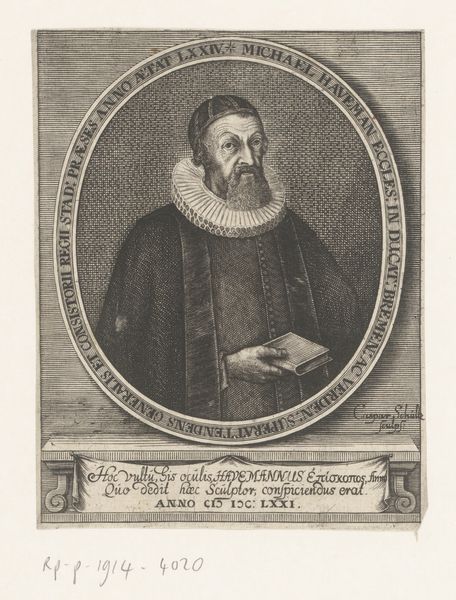
print, engraving
#
baroque
# print
#
old engraving style
#
caricature
#
pencil drawing
#
line
#
history-painting
#
engraving
Dimensions: height 190 mm, width 140 mm
Copyright: Rijks Museum: Open Domain
Curator: Here we have Johann Christoph Oberdörffer’s “Portret van Johann Heinrich Hävecker,” an engraving likely created between 1693 and 1724. The piece is striking, though, perhaps more in its detail than grandeur. Editor: Yes, my first impression is one of intricacy. I’m drawn to the tight, almost obsessive detail, especially the tiny text on those book spines behind the figure. It feels very controlled, meticulously rendered. Curator: The subject, Johann Heinrich Hävecker, was a rector, deacon, pastor, and school inspector. It’s interesting to see these markers of status, such as the books behind him, being used to construct the image of the man in relation to the church. I wonder how Hävecker’s work impacted access to education. Did his theological lens expand or restrict available interpretations? Editor: Absolutely. And let’s not overlook the physical act of creation here. The repetitive labor needed to produce all those fine lines to create shadows and textures... Think of the workshop, the tools used, and the training required for Oberdörffer to execute such a detailed work. What was the economy for these prints and for whom were they intended? Curator: Considering the context in which the piece was likely commissioned we could look at how faith could have shaped cultural perceptions of poverty and privilege. There’s definitely something to be said about the politics involved in these sorts of printed images being produced for specific audiences, likely wealthy members of Hävecker's parish. Editor: Agreed. By considering who commissioned it, and where and how it would have been displayed and consumed, we see how art wasn’t this rarefied, autonomous activity. Curator: Viewing it through this intersectional lens invites a deeper understanding of its historical impact and raises meaningful questions about representation and access. Editor: Right, because examining the piece’s creation through a materialist perspective enriches our sense of its original impact and relevance. Curator: Exactly. These pieces tell us something both about those represented and those who had the means to represent them. Editor: Indeed, something very true, no matter your vantage point.
Comments
No comments
Be the first to comment and join the conversation on the ultimate creative platform.


